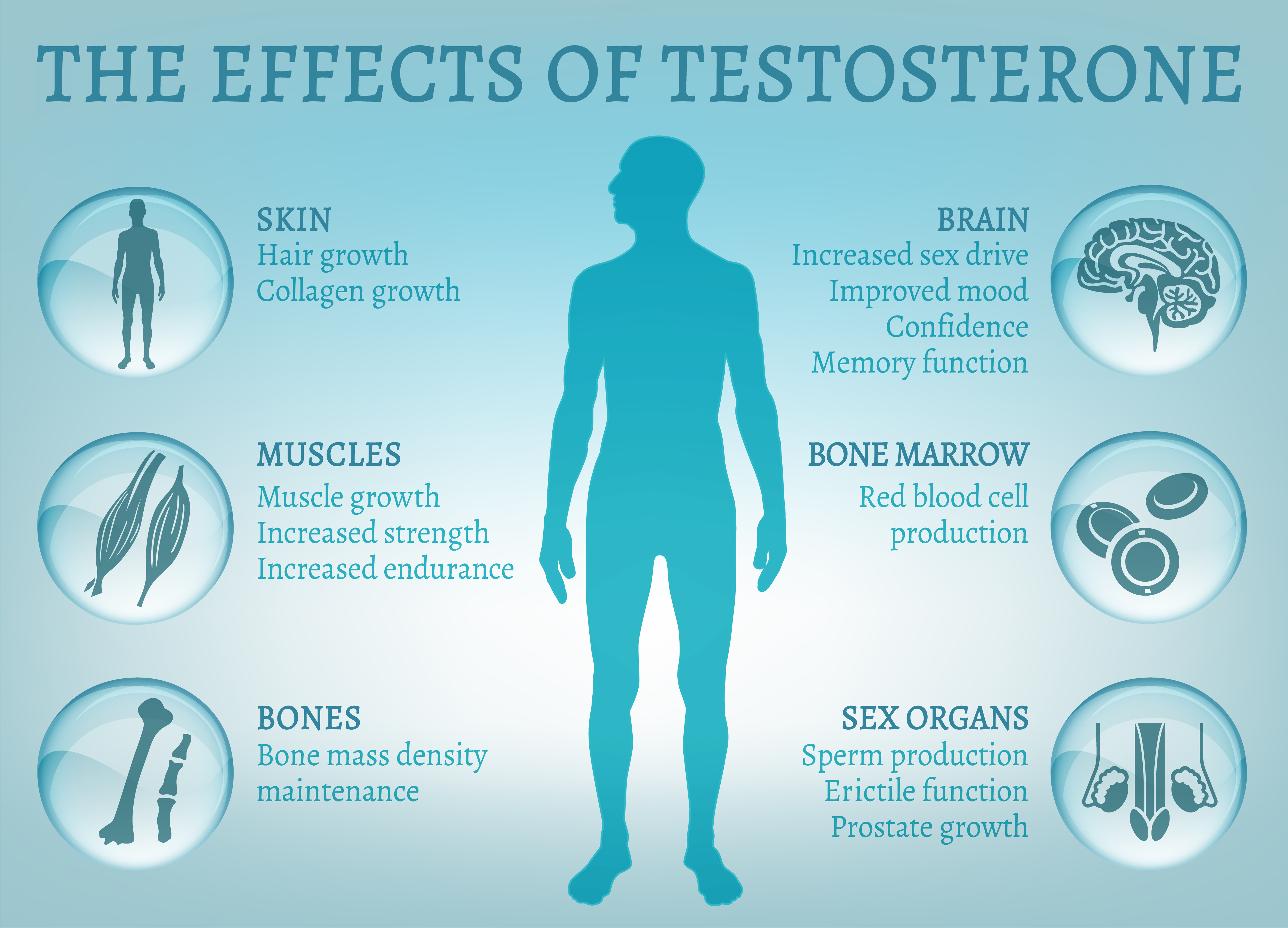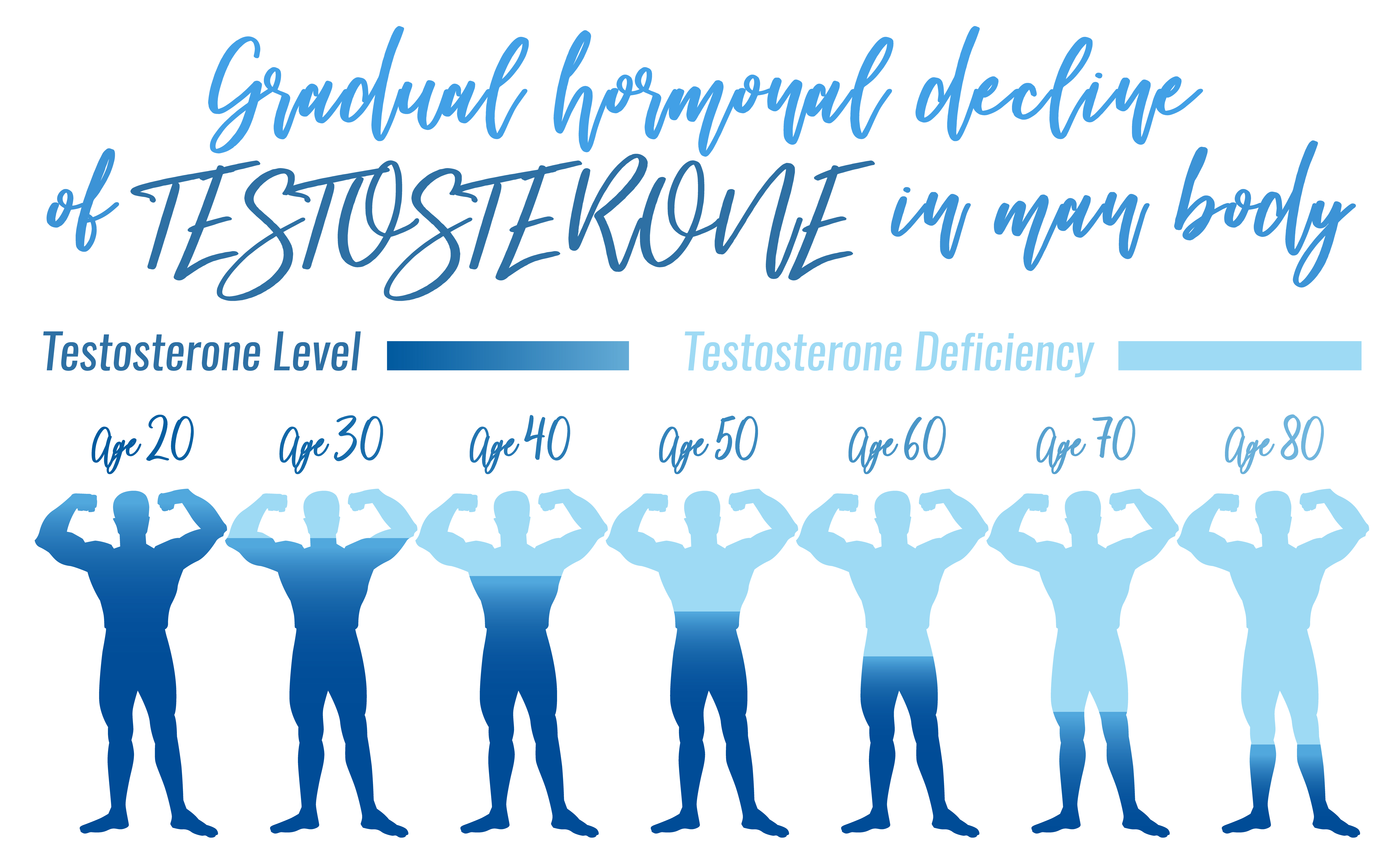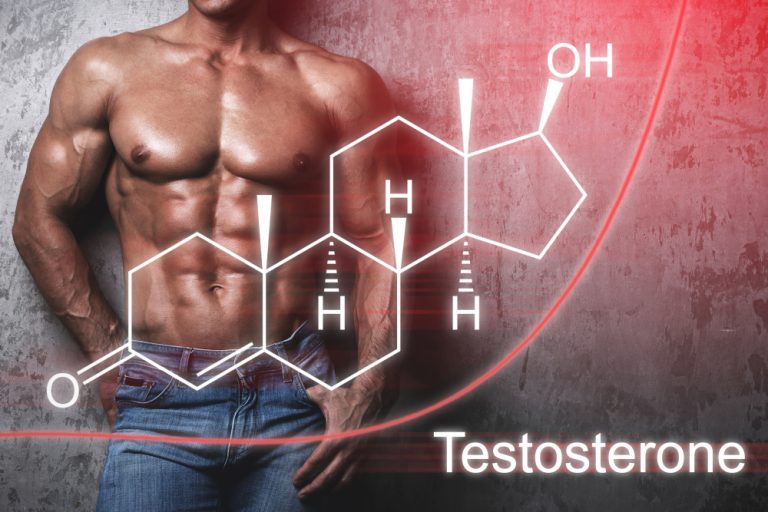It’s identified as the symbol of masculinity, strength or temperament. It’s one of the key hormones regulating the most important processes occurring in the body. Testosterone - because this hormone will be spoken about today, must be produced in appropriate quantities to fulfil its functions. Are there natural ways to influence its level in the system? What are the norms of this hormone for both women and men? What testosterone functions are referred to? These and other questions will be answered in this article.
Testosterone
Testosterone is one of the major male hormones belonging to the androgen group. Its production is 95% mediated by interstitial Leydig cells located in the testes under the influence of luteinizing hormone (LH). Significantly less of it’s also produced by the adrenal cortex. In women, the production of adrenal testosterone reaches 25% and another 25% is produced by the ovaries. The remaining amount is produced by the transformation of other sex hormones (androgens). The daily diet rich in food cholesterol also exerts a significant influence on its synthesis. From the construction point of view, the free testosterone fraction and bound (mainly albumin or globulin complexes) are recognized. Only 1-2% of testosterone in the blood is the free fraction, 40-50% is the fraction associated with albumin and the remaining amount forms the mentioned globulin complexes.
Testosterones activity
Specialized cells receiving information from androgenic hormones (including testosterone) are distributed in almost every cell of the body and affect not only the development, structure or metabolism of the body, but also its psychological sphere. Testosterone, acting anabolically, increases protein synthesis, resulting in rapid skeletal muscle growth. Numerous studies prove that it correlates additionally with the increase of their strength. It also affects the cardiovascular system, contributing to the expansion of blood vessels and stimulating the production of erythropoietin - a hormone responsible for the proliferation of red blood cells. From the research of Smith et al. carried out in 2013, it was shown that testosterone stimulates the reconstruction of bone tissue by osteoblast synthesis and acceleration of their mineralization. It’s also worth mentioning that in the case of men it’s a key hormone initiating the process of spermatogenesis (sperm formation).
From a physiological point of view, the importance of testosterone in women is difficult to determine, and its action is mainly associated with the effects on bone metabolism, mood and the level of libido.

Testosterone level
Testing to determine the testosterone concentration in the body can be done in any diagnostic laboratory, because it’s based on blood collection. As a rule, total testosterone is determined due to the much more accurate measurement result.
The normal hormone concentration in men varies between 6.9-34,7 nmol / l. The undervalued values are most often observed in the period of andropause. It appears gradually from 40-60 years of age and is accompanied by a decrease in testosterone levels by about 1% per year. In women, the total daily production of testosterone is about 100-400 micrograms, and the blood concentration ranges between 0.7-2.8 nmol / l. The amount of testosterone changes in women along with the course of the monthly cycle reaching the lowest concentration in the early follicular phase. Changes are also recorded during pregnancy, where testosterone levels increase, reaching the highest value during the third trimester.
Of course, apart from the physiological aspect, the testosterone level is also significantly influenced by the diet, nutrients of the diet, stress and physical activity. From a purely nutritional point of view, vitamin D is essential for maintaining normal testosterone levels. In studies carried out by Pilz et al., An increase in free and total testosterone was found in men who supplemented 83 μg of this vitamin daily for a period of one year.
The supply of zinc is also important in the androgen synthesis process. It was shown that in the case of limited intake of this element with diet, the testosterone level decreased, and the re-supplementation with this element, brought back the serum hormone concentration to the initial values.Unfortunately, there are also components that can significantly inhibit testosterone synthesis. An example of this is excessive alcohol consumption. This substance interferes with the ratio of androgens to oestrogens by inhibiting the cytochrome P450 function and lowering the concentration of zinc in the body.
In addition to alcohol, it’s also worth mentioning plant phytoestrogens, naturally occurring in e.g. soy. The mechanism of action of these compounds is confusingly similar to the action of female hormones - oestrogen, which is why the consumption of these plants should be renounced in particular by men.

Testosterone boosters - are they worth using?
In stores offering dietary supplements, preparations containing sabal palm (Sereno arepens) and nettle root (Urtica dioica) are relatively popular. Due to the content of phytosterols, these ingredients compete with testosterone for a place in the SHBG protein (Sex Hormone-binding Globulin), thus increasing the amount of free testosterone.
Another used group of supplements are preparations containing testosterone precursors, including dehydroepiandrosterone (DHEA), which in terms of its chemical structure is very similar to it and is relatively easily transformed.
Testosterone as doping
Testosterone fulfilling the role of a doping agent is used for a relatively long time. The first mention dates back to 1936 where during the Olympic Games some players took doses of this hormone reaching even 1 g / day for six weeks.
Currently, testosterone is administered both in the form of tablets and injections, with intramuscular injections being decidedly more effective. To this end, testosterone esters in the form of propionate, cypionate or ethane are most commonly used. The injection directly into the muscle allows a faster metabolism of the hormone, and thus increase its concentration in the body (usually within 3 to 5 days). Numerous publications confirm the correlation of hormone therapy with the development of strength and muscle mass at doses of 260-600mg / week with a cycle length of 10-12 weeks.
Due to the satisfactory effects, it has gained popularity primarily among athletes of body sports, where the construction and aesthetics of the body are assessed first and foremost.






